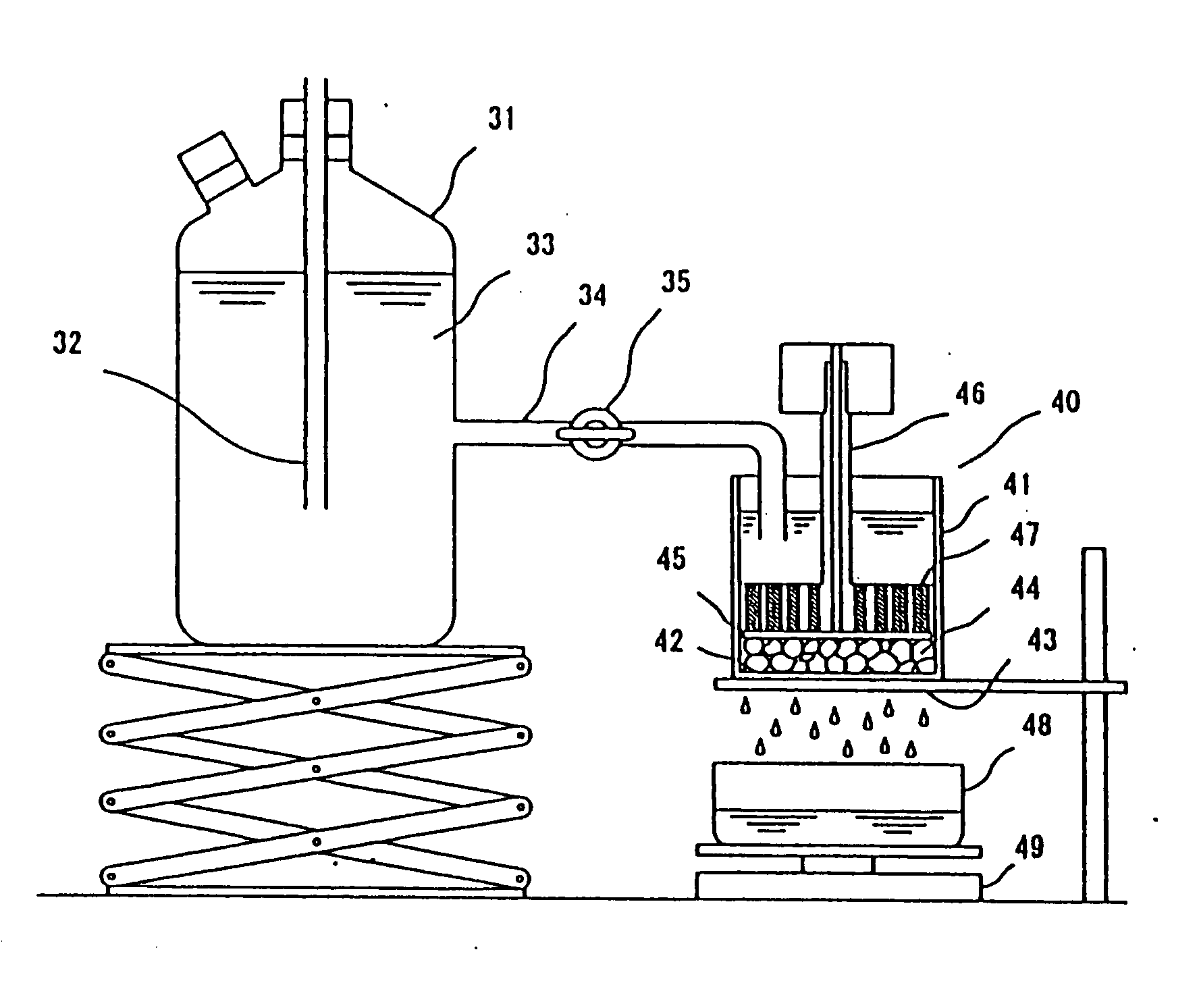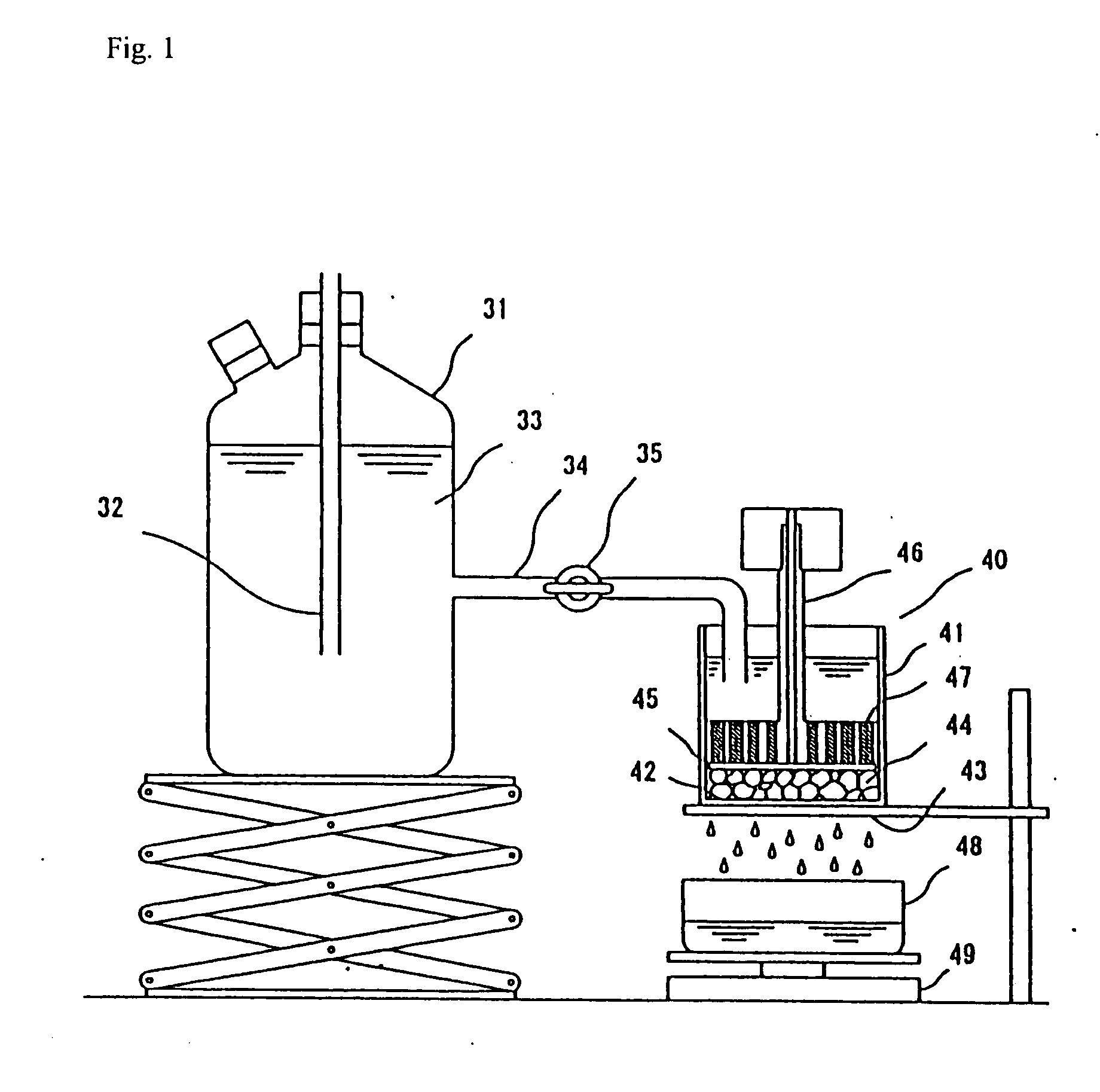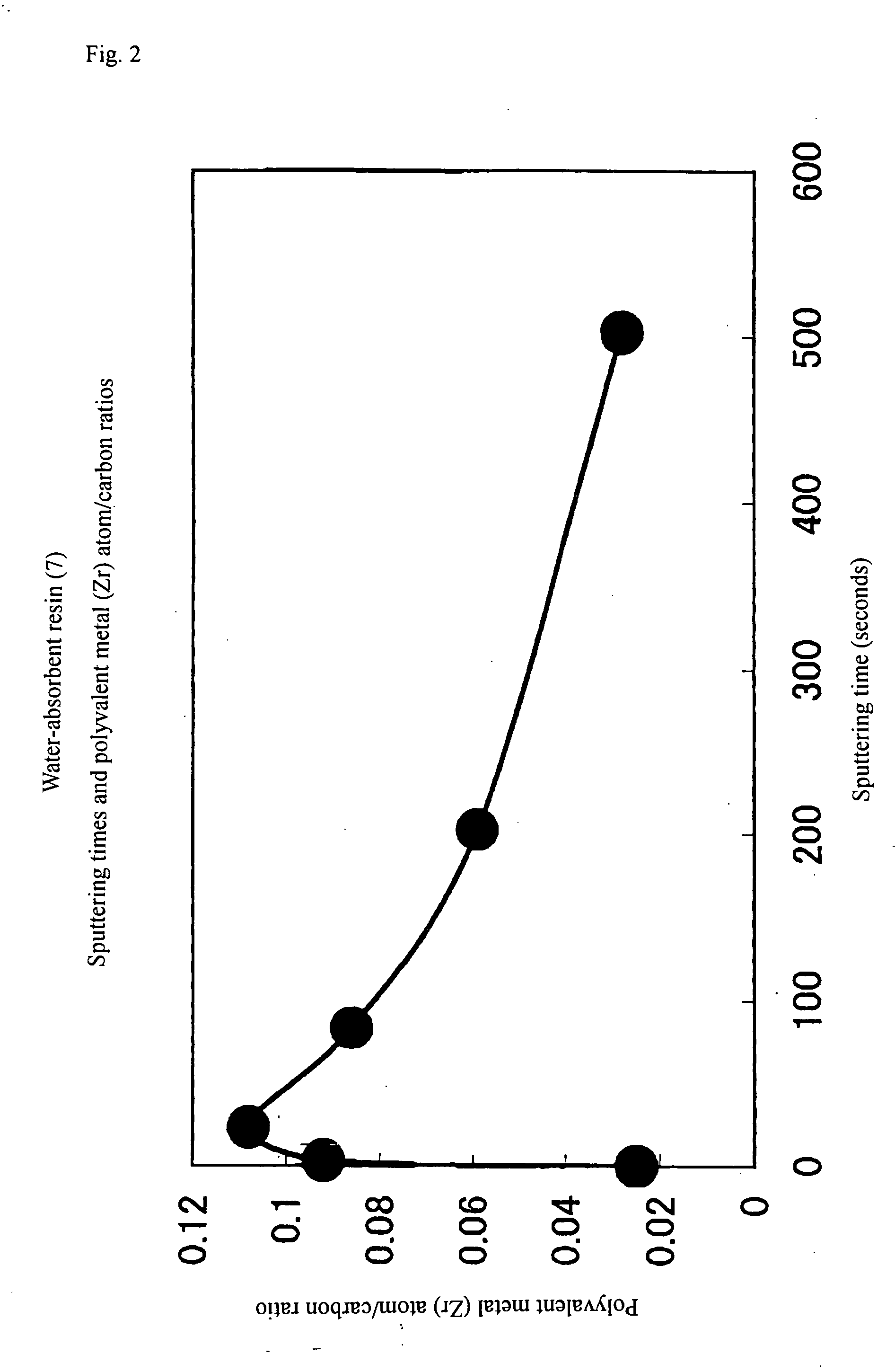Water-absorbent resin having treated surface and process for producing the same
a water-absorbent resin and surface technology, applied in absorbent pads, bandages, medical science, etc., can solve the problems of remarkably reduced gel handling properties, natural limit of hydrophilic fibers and water-absorbent resin ratios, and difficult to achieve the effect of reducing the amount of hydrophilic fibers, and ensuring the effect of absorbing water
- Summary
- Abstract
- Description
- Claims
- Application Information
AI Technical Summary
Benefits of technology
Problems solved by technology
Method used
Image
Examples
referential example 1
In a reactor as prepared by lidding a jacketed stainless twin-arm kneader of 10 liters in capacity having two sigma-type blades, there was prepared a reaction liquid by dissolving 11.7 g (0.10 mol %) of polyethylene glycol diacrylate into 5,438 g of aqueous solution of sodium acrylate having a neutralization degree of 71.3 mol % (monomer concentration: 39 wt %). Next, dissolved oxygen was removed from this reaction liquid under an atmosphere of nitrogen gas for 30 minutes. Subsequently, 29.34 g of 10 wt % aqueous sodium persulfate solution and 24.45 g of 0.1 wt % aqueous L-ascorbic acid solution were added thereto under stirred conditions. As a result, polymerization started after about 1 minute. Then, the polymerization was carried out in the range of 20 to 95° C. while the forming gel was pulverized. Then, the resultant crosslinked hydrogel polymer was taken out after 30 minutes from the start of the polymerization. The crosslinked hydrogel polymer as obtained was what had been d...
example 1
An amount of 100 g of the water-absorbent resin (A1) having been obtained from Referential Example 1 was uniformly mixed with a surface-treating agent comprising a mixed liquid of 1.0 g of ethylene glycol, 3.0 g of pure water, and 1.0 g of Bacote 20 (ammonium zirconium carbonate, an aqueous solution of 20 wt % as zirconium oxide, produced by MELchemicals), and then the resultant mixture was heat-treated at 180° C. for 30 minutes while being stirred in a mortar mixer. Furthermore, the resultant particles were disintegrated to such a degree that they could pass through a JIS standard sieve having a mesh opening size of 850 μm. As a result, a water-absorbent resin (1) was obtained. The results of having measured the physical properties of the water-absorbent resin (1) are shown in Table 1.
example 2
An amount of 100 g of the water-absorbent resin (A2) having been obtained from Referential Example 1 was uniformly mixed with a surface-treating agent comprising a mixed liquid of 0.7 g of ethylene carbonate, 2.2 g of pure water, and 1.0 g of aqueous zirconium acetate solution (aqueous solution of 30 wt % as zirconium oxide), and then the resultant mixture was heat-treated at 180° C. for 30 minutes while being stirred in a mortar mixer. Furthermore, the resultant particles were disintegrated to such a degree that they could pass through a JIS standard sieve having a mesh opening size of 710 μm. As a result, a water-absorbent resin (2) was obtained. The results of having measured the physical properties of the water-absorbent resin (2) are shown in Table 2.
PUM
| Property | Measurement | Unit |
|---|---|---|
| Temperature | aaaaa | aaaaa |
| Time | aaaaa | aaaaa |
| Percent by mass | aaaaa | aaaaa |
Abstract
Description
Claims
Application Information
 Login to View More
Login to View More - R&D
- Intellectual Property
- Life Sciences
- Materials
- Tech Scout
- Unparalleled Data Quality
- Higher Quality Content
- 60% Fewer Hallucinations
Browse by: Latest US Patents, China's latest patents, Technical Efficacy Thesaurus, Application Domain, Technology Topic, Popular Technical Reports.
© 2025 PatSnap. All rights reserved.Legal|Privacy policy|Modern Slavery Act Transparency Statement|Sitemap|About US| Contact US: help@patsnap.com



